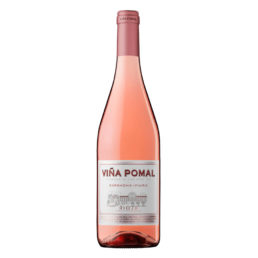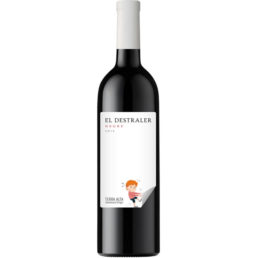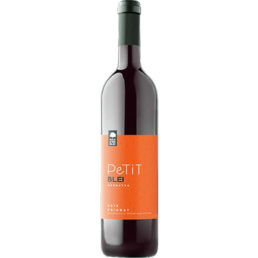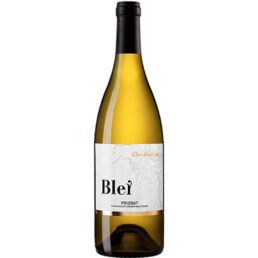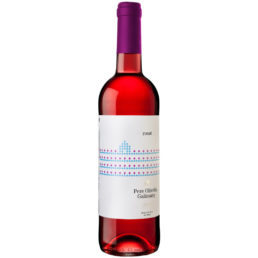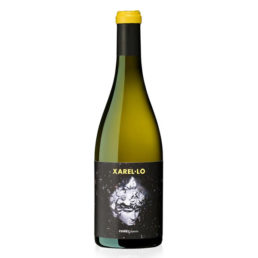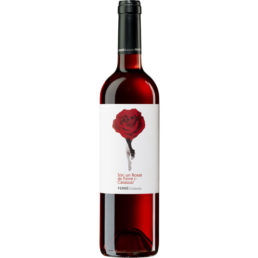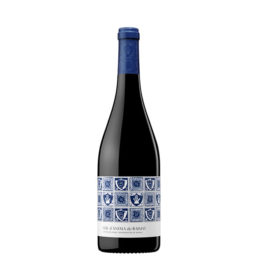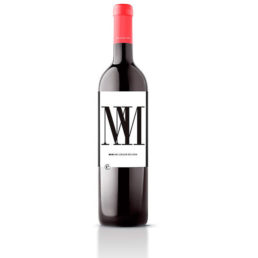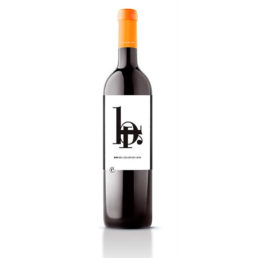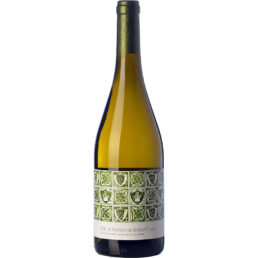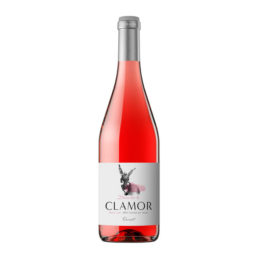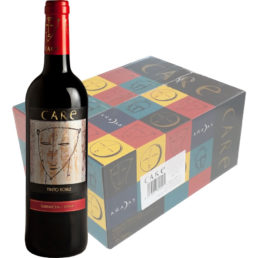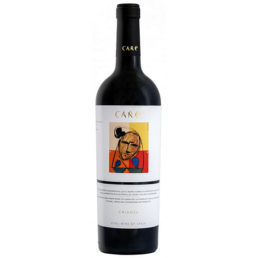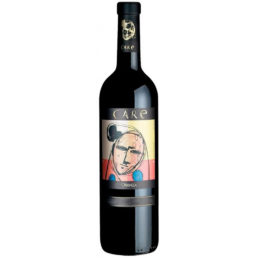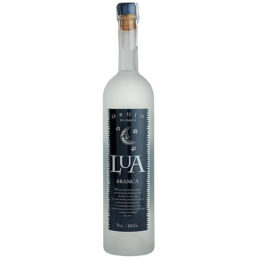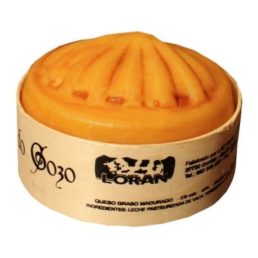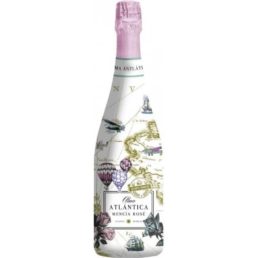Pre-maceration in cold of the grapes during 24h. Long fermentation, of 20 to 24 days, with indigenous yeasts and “pegeage” manual journal. Parenting 6 months in French oak barrels (Q. Petrea) of 225 liters, fine grain and medium toast light.
Rice
-
Rosé wine of Bodegas Bilbaínas – Viña Pomal
First pink of Viña Pomal. It is made with a 70% of Grenache and a 30% of Viura, traditional varieties for rosé wines of Rioja. Able to satisfy wine lovers classic but has an edgy touch.DEVELOPMENT (VINIFICATION)Viña Pomal Pink is produced by the method of “bleeding”. Once received the grape in the winery is performed the process of destemming and crushing traditional, and encuba in a warehouse where we make a slight maceration in cold for at least 12 hours. When the color of the juice is the desired, it makes the “bleeding” that consists in separating the grape must tear the skins. This wort is fermented at a controlled temperature of 14 ºC, keeping the aromas and the freshness of the wine.VINEYARD (VITICULTURE)From vineyards located in the Rioja Alta, area of atlantic influence with soils of heterogeneous low fertility and texture specific. With these characteristics, the varieties Garnacha and Viura, traditional rosé Rioja, they offer their maximum fullness to get a pink wine color only, acidity is a feature that provides freshness and youth and nuances varietals that make the long and expressive.PAIRINGViña Pomal Pink goes with all kinds of incoming, stew and salad as well as pasta, pizza and rice dishes. Also Ideal for pairing with dishes with seafood and blue fish. -
Red wine Celler Germans Balart – The destraler negre
DEVELOPMENTFermentation at a controlled temperature of 22 ° C in stainless steel tanks.PAIRINGPasta, rice, cured cheeses and red meats. -
White wine, Scala Dei Massipa
Massipa is the reissue of one of the wines from the cellar that had been developed in the past with the name of “White Scala Dei”. With this wine, want to show the fresh face of the Garnacha Blanca in the Priory in conjunction with the low Chenin blanc. Comes from a single vineyard historical, The Massipa, planted with white varieties. A white sleek and subtle that has demonstrated a good capacity for ageing.DEVELOPMENT (VINIFICATION)We harvested the Grenache and Chenin: the Grenache is at the point of maturation that we consider it appropriate to, and the Chenin helps us to maintain the acidity. Already in the cellar, are pressed together, the two varietals, is desfanga the wort and is transferred to a concrete tank where fermentará at a controlled temperature of 16-18 ° C with indigenous yeasts. Once finished the fermentation, is transferred to remove the lees thick, and subtract just fine. During the first two months of ageing is done a battonage per week and remains in the deposit; from the two months starts static ageing with lees on the bottom of the foudre.VINEYARD (VITICULTURE)This is a wine of a single vineyard, The Massipa, located just to the side of the vine of Masdeu, with east orientation, to 650 meters of height and clayey soil red with inlays of gypsum. The vineyard has 45 years and is the only one with white grapes of Cellers Scala Dei. A road divided the vineyard in half: to one side there is the White Grenache and the other of the Chenin, planted by the Sr. Peyra at the end of the 80 with the arrival of varietal French at the Priorat.AWARDS93 POINTS ROBERT PARKER 201890 POINTS YEARBOOK OF WINES (THE COUNTRY) 2018 -
Red wine Mas d'en Blei – Petit Blei
PRODUCTION Limited to 6.000 bottles.VITICULTURE Grapes coming from the vineyards in coastal licorella of the finca Mas d'en Blei with orientation to the south-west. Controls are performed of ripening before the harvest to achieve your optimum point. The harvest is performed manualment in boxes 10-15 kg. After the first selection, drift, and makes a second selection grain by grain. Development separated by variedadeVINIFICATION Wine with its own style elaborated with autochthonous varieties. -
White wine Mas d'en Blei – Clos Martina
PRODUCTION 4.000 bottles.VITICULTURE Grapes are produced only of the finca Mas d'en Blei. Vineyards on terraces of slate (licorella). Vintage hand. Selection in table. Development separated by varieties.VINIFICATION Pre-maceration in cold during 24 hours. Pressing to racking to a tub where it is kept other 24h. Fermentation in new French oak barrels (Q. Petrea) of 300 liters, fine grain and medium toast light. Parenting 6 months with lees and "battonage" journal. Stabilization in cold, the natural way (seasonal), not induced. Bottled: 1 year in the bottle.
AWARDS GOLD medal INTERNATIONAL WINE CHALLENGE 2016. -
Rosé wine Pere Olivella Galimany
The origin; vineyards of the finca's own farm Can Pere del Maset. The plot of the Sierra, planted in 1999 is in charge of producing this Cabernet Sauvignon. Vines with vegetal cover spontaneous to support biodiversity and the ability to regulate the water retention of the soil in a natural way. Viticulture dry, do not irrigate. Rational use and fully controlled from the copper and sulphur to try to minimize your use. We use sexual confusion to control Lobesia botrana (the european grapevine moth). Only use organic fertilizers. The harvest is performed in its optimal state of maturation phenolic, in the early morning hours, by the control of the temperature. Selection in the own vineyard, only the best grapes will be selected, harvesting by hand to ensure maximum quality of the grape.Elaboration:Processing by gravity in the winery, derrapado and later crushed soft grape. Cold maceration of the skin with the pulp of the grape for a few hours for the extraction to a desired color and of different aromatic compounds, after performing the alcoholic fermentation at low temperature and very slowly.Pairing:It is a wine that is great for snacks, allows a wide selection of dishes and various cuisines. Highly recommend it but some dishes that we can harmonize perfectly with this wine, the pasta (pizzas varied, gnocchi al funghi, raviolo stuffed brie cheese with prawns, ...) carpaccio of salt cod or tuna, and some rice. It is also a good ally of the oriental cuisine. -
Red wine Giró del Gorner Booking 2012
To produce this red wine reserve same grapes of the vineyard Cirerers, of the variety cabernet sauvignon and the vineyard Box, merlot. Vintage mature and maceration, slow, slow aging in oak barrels.Elaboration:
The fermentation takes place at controlled temperature, 25/30ºC, with maceration with their skins, in order to favour the formation of aromas and color in the first fermentation.
Foster:
Parenting 12 months in oak barrels, staying a minimum of 2 years in the bottle.
Pairing:
Due to its complexity, is perfect for taking with all types of red meat and hunting. Ideal companion in rice dishes and stews, as well as to drink with strong cheeses.
-
White wine Ferré i Catasús – Xarel.what
“I'm from here, my country is Catalonia, live with feet on earth and head in the stars, calling the gods. I am the stability and the challenge at the same time, I am the Xarel-lo from Ferré i Catasús. "The Xarel-lo de Ferré i Catasús is meticulously elaborated with the native and main variety of the Penedés that gives it its name.(consult add)Elaboration:Manual harvest in boxes of a few 15 kilos, pre-selection in the same vineyard. Once at the winery, is inserted in stainless steel tanks until mid-fermentation. Then we went to French oak barrels of 225L. Once the fermentation is finished, working the lees by the technique of “beating” (stirring of the lees) to get a smooth longer.Pairing:Pairs perfectly with all kinds of fish, rice, post, or cheese.. -
Rosé wine Ferré i Catasús – Sóc a Rosat
“I am the happiness and the love, I am the delicacy, I am the femininity, I illuminate each day, I am a smile, Sóc un Rosat de Ferré i Catasús. "This rosé expresses the finesse and softness of Merlot, without ceasing to be aromatic and full-bodied, and without forgetting the greatness of belonging to the family of the CabernetElaboration: Vintage mechanical harvested at night at the optimal point of maturity. Cold pre-fermentation maceration during 6-8 hours. Fermentation in a tub of stainless steel to 15 -16°C.Pairing:With its ruby color and a graduation average, you can serve it with rice and pasta, providing the smoothness and balance that they need, but you can also enjoy with a fruit salad, combination that certainly will not leave indifferent to the lovers of good wine and the mediterranean diet. -
Rosé wine Ferré i Catasús – Mas Suau
“I'm from here, this is my land, my farm, my animals, my life, I am a simple beauty, direct, I am soft, I am Mas Suau de Ferré i Catasús. ”Mas Suau is the promise of a pleasant moment, a moment of each day, whatever the occasion, to enjoy a glass of wine.Elaboration: Vintage mechanized. Vinifcación of the varieties separately, and temperature-controlled fermentation at 16 º c.Pairing:Mas Suau rosado is ideal to combine with fish to the plate, as well as meats and rice dishes. -
Red wine Vol d’ànima de Raimat
Vol d Ànima, formerly known as Ànima de Raimat, it is the culmination of our first 100 years of history. The tiles that dress up your tag are the same that look in the walls of the castle of Raimat from 1935, after the reform carried out by the architect Rafael Masó. This creation represents the soul of Raimat: a young red wine, modern, fresh, medium-bodied, with notes of cocoa, developed with the 3 red varieties that best express the terroir cellar: Cabernet Sauvignon, Tempranillo and Syrah.DEVELOPMENT (VINIFICATION)It starts with a grape harvest at night to preserve the primary aromas of the fruit.When the grapes reach the cellar, is cooled to a temperature of 15 ºC.A part of the grape is vinifica looking for a profile of the wine more fruity and fresh. Is achieved by keeping the temperature low for 24-48h and fermenting later 25 ºC. The other part of the grape is fermented at a higher temperature for greater texture and complexity in the wine. These two styles came together we offer a young red wine, modern, with lots of fruit and structure in the mouth.PAIRINGVol d Ànima de Raimat Red wine can accompany well to dishes of hunting, mushrooms, meats and legumes, as well as sausages and rice. It is a wine that is very versatile. -
Wine red Mim's Celler de l'era
Elaboration: our wines are produced with grapes conreadas in our own vineyards, harvested by hand in boxes 10 to 15 Kg. The grapes are hand selected in the table vibrated. Each variety is fermented separately in stainless steel vats i it makes parenting later in barrels of French oak 225 liters of fine-grain i toasted light.
Pairing: red meats and hunting, rice (mountain, mushrooms and foie) and stews.
-
Red wine Bri of the Celler de l’Was
Elaboration: Grapes sourced only from the estate of Mas de les Moreres. Harvested by hand in boxes 16 kg. The first selection, is drift, and it makes a second selection grain by grain. Fermented in stainless steel tanks and maceration of 22 days up to the pressing. Parenting 12 months in new French oak barrels of 225 liters, fine grain and medium toast light.
Bottled: July 2013
Pairing: It is a wine that goes with rice (mountain, mushrooms and foie) and stews.
-
Vino Blanco Raimat’s Flight of the Soul
Vol d Ànima, formerly known as Ànima de Raimat, it is the culmination of our first 100 years of history. The tiles that dress up your tag are the same that look in the walls of the castle of Raimat from 1935, after the reform carried out by the architect Rafael Masó. This white wine represents a new style in the house with the purpose of adapting to the new trends, with sustainable viticulture of the varietals that best express the terroir of the winery: Chardonnay and Xarel·lo.From the vintage 2019, Raimat Blanco's Flight of the Soul becomes ecological, betting on biodiversity, balance and respect for the earth.DEVELOPMENT (VINIFICATION)After pressing, the wort is cooled below 10 ºC so that the decanting static was able to preserve its primary aromas. Then, the must fermented at a controlled temperature of 16 ºC during 2 the 3 weeks. The three grape varieties are fermented separately. After the fermentation and clarification processes, the final mixture was made for Vol d'Ànima de Raimat Blanco Ecológico.PAIRINGVol d Ànima de Raimat Blanco is a wine that can pair with a wide range of foods, as can be caps (squid, squid, bravas, spatter, Russian salad, etc.), pasta and rice creamy, white fish and seafood. It is also great with birds. -
Rosé wine Raimat Clamor
Cry is the name given to the lower part of the mountain where they grow the vines that produce this wine.Their grapes are developed pink, red and white. A privileged spot of the finca Raimat which gives rise for years, one of the best-known wines of the house.Pairing
Pair with vegetables, white meat, rice, soft cheeses and fish. Also with casual dishes such as pizza, fried and pates. -
The wine Care Tinto Roble 50cl. 2017
The wine Care Tinto Roble 50cl. 2017The different varieties were vinificaron separately given their different cycle of maturity. These grapes once being removed from their stems and without compressing, were the tanks fermenters conical stainless steel. After a cold maceration (9ºC) during 8 days, it underwent alcoholic fermentation with selected yeast, leaving to get the temperature to 24ºC. After the devatting or drawing off, the wine made the malolactic fermentation and after mixing the two varieties (50%) underwent a rest in new barrel of American Oak during 4 months. -
The Wine Care Tinto Roble
The Wine Care Tinto Roble 2017The different varieties were vinificaron separately given their different cycle of maturity. These grapes once being removed from their stems and without compressing, were the tanks fermenters conical stainless steel. After a cold maceration (9ºC) during 8 days, it underwent alcoholic fermentation with selected yeast, leaving to get the temperature to 24ºC. After the devatting or drawing off, the wine made the malolactic fermentation and after mixing the two varieties (50%) underwent a rest in new barrel of American Oak during 4 months. -
Wine Care Tinto Roble Magnum 2017
Wine Care Tinto Roble Magnum 2017The different varieties were vinificaron separately given their different cycle of maturity. These grapes once being removed from their stems and without compressing, were the tanks fermenters conical stainless steel. After a cold maceration (9ºC) during 8 days, it underwent alcoholic fermentation with selected yeast, leaving to get the temperature to 24ºC. After the devatting or drawing off, the wine made the malolactic fermentation and after mixing the two varieties (50%) underwent a rest in new barrel of American Oak during 4 months. -
Wine Care Crianza
Wine Care CrianzaIn the drawing, performs a pre-fermentation maceration 6 days at a temperature of 10 ° c. The temperature of the fermentation is allowed to reach up to 26C. After the alcoholic fermentation, the wine remains in maceration with the skins during 15 days. The malolactic fermentation takes place in tank.Parenting during 12 months american Oak, native to the forests of Kentucky. -
Wine Care Crianza 2015
Wine Care Crianza 2015Red wine belonging to the do Cariñena made from grapes Merlot (30%) y Tempranillo (70%). Performs a pre-fermentation maceration 6 days at a temperature of 10 ° c. The temperature of the fermentation is allowed to reach up to 26C. After the alcoholic fermentation, the wine remains in maceration with the skins during 15 days. The malolactic fermentation takes place in tank.Parenting is 12 months in american oak barrels. -
Wine Care Magnum Foster 2015
Wine Care Magnum Foster 2015Red wine belonging to the do Cariñena made from grapes Merlot (30%) y Tempranillo (70%). Performs a pre-fermentation maceration 6 days at a temperature of 10 ° c. The temperature of the fermentation is allowed to reach up to 26C. After the alcoholic fermentation, the wine remains in maceration with the skins during 15 days. The malolactic fermentation takes place in tank.Parenting is 12 months in american oak barrels. -
Vino Care Bancales 2014
Vino Care Bancales 2014Performs a pre-fermentation maceration 7 days at a temperature of 10 ° c. The fermentation takes place in tanks conical to a temperature of 29ºC. After the alcoholic fermentation, the wine remains in maceration with the skins during 21 days. The malolactic fermentation is done in tank.The wine remains in american oak barrels, 60% (Forests of Kentucky) and French, 30% (Forests of Allier), during 14 months. During this period we made three fillings. Finally, remains in bottle for 17 months before marketing. -
Wine Care Bancales Magnum
Wine Care Bancales MagnumPerforms a pre-fermentation maceration 7 days at a temperature of 10 ° c. The fermentation takes place in tanks conical to a temperature of 29ºC. After the alcoholic fermentation, the wine remains in maceration with the skins during 21 days. The malolactic fermentation is done in tank.The wine remains in american oak barrels, 60% (Forests of Kentucky) and French, 30% (Forests of Allier), during 14 months. During this period we made three fillings. Finally, remains in bottle for 17 months before marketing. -
Vino Care XCLNT 2014
Vino Care XCLNT 2014To obtain a low yield and higher concentration in the fruit, we performed the pruning to a “bud eye” in each one of the varieties. Getting 1600 kgs/Ha for the Grenache and 2900 kg/Ha in the Cabernet and 3500 kg/Ha for the Syrah.Development: Pre-fermentation maceration 7 days at a constant temperature of 10°C. Fermentation done in tanks and conical up to a temperature of 30°C. After the alcoholic fermentation, the wine remains in maceration with the skins during 22 days. Develop malolactic fermentation in barrel.The wine was transferred to barrels of French oak Allier where it remains a time of 16 months. During the ageing the wine suffered 4 trasiegos.












